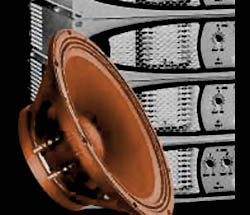
Vas/Cms: Vas represents the volume of air that when compressed to one cubic meter exerts the same force as the compliance (Cms) of the suspension in a particular speaker.
Vas is one of the trickiest parameters to measure because air pressure changes relative to humidity and temperature – a precisely controlled lab environment is essential.
Cms is measured in meters per Newton, and is the force exerted by the mechanical suspension of the speaker. It is simply a measurement of its stiffness.
Considering stiffness (Cms), in conjunction with the Q parameters, gives rise to the kind of subjective decisions made by car manufacturers when tuning cars between comfort to carry a family and precision to go racing.
Think of the peaks and valleys of audio signals like a road surface, then consider that the ideal driver suspension is like car suspension that can traverse the rockiest terrain with race-car precision and sensitivity at the speed of a jet plane.
Vd: Peak Diaphragm Displacement Volume – in other words, the volume of air the cone will move. It is calculated by multiplying Xmax (voice coil overhang of the driver) by Sd (Surface area of the cone). Vd is noted in cc, and the highest Vd figure is desirable for a sub-bass transducer.
BL: Expressed in Tesla meters, this is a measurement of the motor strength of a driver. Think of this in terms of how good a “weightlifter” the transducer can be. A measured mass is applied to the cone, forcing it back, while the current required for the motor to force the mass back is measured.
The formula is mass in grams divided by the current in amperes. A high BL figure indicates a very strong transducer that moves the cone with authority.
Mms: The combination of the weight of the cone assembly plus the “driver radiation mass load.” The weight of the cone assembly is easy: it’s just the sum of the weight of the cone assembly components.
The driver radiation mass load is the confusing part. In simple terminology, it is the weight of the air (the amount calculated in Vd) that the cone will have to push.
Rms: Represents the mechanical resistance of a driver’s suspension losses. It is a measurement of the absorption qualities of the driver suspension and is stated in N*sec/m.
